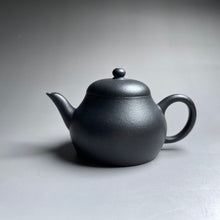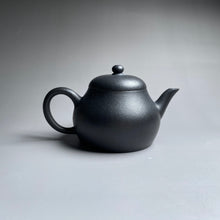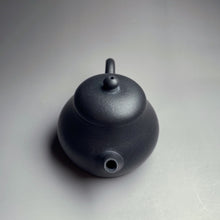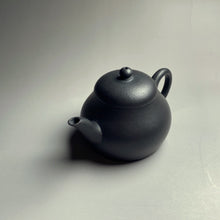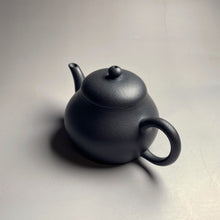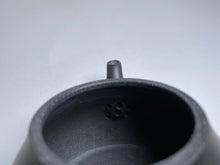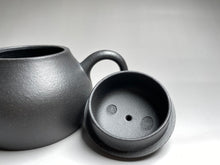
Capacity: Approximately 120ml.
This "heini" or "black clay" Yixing teapot is produced by firing original ore zhuni clay in a low oxygen environment in the kiln. Reduction fired zhuni appears black, even darker than wuhui zini. The clay has the same properties as zhuni fired in oxidation firing, but appears black instead of red/orange.
Firing a teapot in a low-oxygen environment is called “wuhui” 焐灰 which can be loosely translated as “smother with ash to fire.” The teapot is stuffed with dry rice straw, placed in a clay box and surrounded with more rice straw before being covered. When it is fired in this way, the straw uses the oxygen when it burns to ash, reducing the oxygen in the clay box while the teapot is being fired. This creates the reduced oxygen environment that gives the clay its black appearance.
You can read our blog entry here to learn more about the reaction that occurs in a reduction environment to give the clay this appearance in our blog post here.
This teapot reproduces the shape of a teapot made by the famous potter Meng Chen 孟臣 (see last photo of actual antique teapot by Meng Chen, sold at auction). This shape is called "Meng Chen Small Teapot" 孟臣小品。It is approximately 120ml, perfect size for a solo or two person gongfu tea session. It is made by Lin Hanpeng and Chen Chunhong Studio.
This teapot is made from the rarer red clay known as zhuni. The zhuni clay was mined in Xiaomeiyao Yixing. As you can see from the photos, zhuni clay has a slight bumpy appearance. The clay will develop a shine from use. Zhuni clay is prized for its ability to bring out the best flavours. It is also the most difficult clay to fire as it is more likely to break during the process. You can read more about zhuni clay in our blog entry here.
This pot is known as "half-handmade" as the sculptor uses a molding tool to shape the body, and uses his hands for the handle, spout, holes, and smoothing out the body. In fact, no machine was used in it's shaping as the use of the tool is entirely manual.
You can read more about half handmade teapots in our blog entry here.
Preparation Before Use
Yixing Teapots should be prepared before using the first time. This is called "opening the pot". It removes the dust from firing the teapot.
We recommend rinsing the teapot under warm water two or three times, then filling the teapot with boiling water and emptying it out two to three times. After this the teapot is ready for use.









